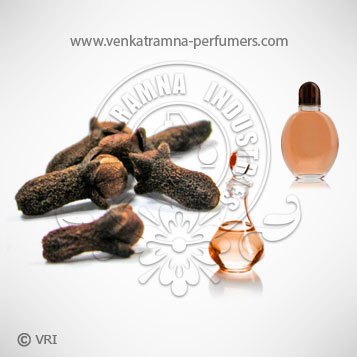
| Botanical Name | Syzgium Aromaticum L |
| Common Name | Clove, Clovos, Caryophyllus |
| Country of Origin | Indonesia, India, Pakistan, Sri Lanka |
| Solubility | soluble in water, insoluble in oil |
| Specific Gravity | N/A |
| Optical Rotation | -2.0 – 0.0 @ 20°C |
| Refrective Index | 1.528 – 1.537 @ 20°C |
| PlantPart | |
| Bland With | N/A |
| CAS No | 8000-34-8 |
| Flash Point | > 100 °C |
| Extraction Method | Solvent Extraction |
Clove oleoresin is prepared by solvent extraction of clove buds. The considerable amount of final product is obtained by using different types of solvents available in the market. However in view to make food safety product, ethanol is generally used as a solvent agent, as this is regarded as non toxic material compared with the other solvents. The oleoresin is extremely concentrated product which contains more flavoring ingredients that can be soluble in the particular solvent used, as it turns much close to original clove flavor and odor.
Until modern times, cloves grew only on a few islands in the Maluku Islands (historically called the Spice Islands), including Bacan, Makian, Moti, Ternate, and Tidore.[18] In fact, it is believed that the oldest clove tree in the world, named "Afo," is found on Ternate—the tree being between 350 and 400 years old.[19] Seedlings from this Afo tree were stolen by a Frenchman named Poivre in 1770, transferred to France, and then later to Zanzibar which is today the world's largest producer of cloves.
Color : Dark clove color ,,
Aroma : Close to original clove odor
The main constituents of clove oil are eugenol, eugenol acetate, iso-eugenol and caryophyllene.
Extensively used as domestic spice worldwide. It has been used for skin infections (scabies, athlete’s foot); for digestive upset; to dress the umbilical cord; for intestinal parasites; to ease the pain of child birth (steeped in wine); and notably for toothache. The tea is used to relieve nausea.